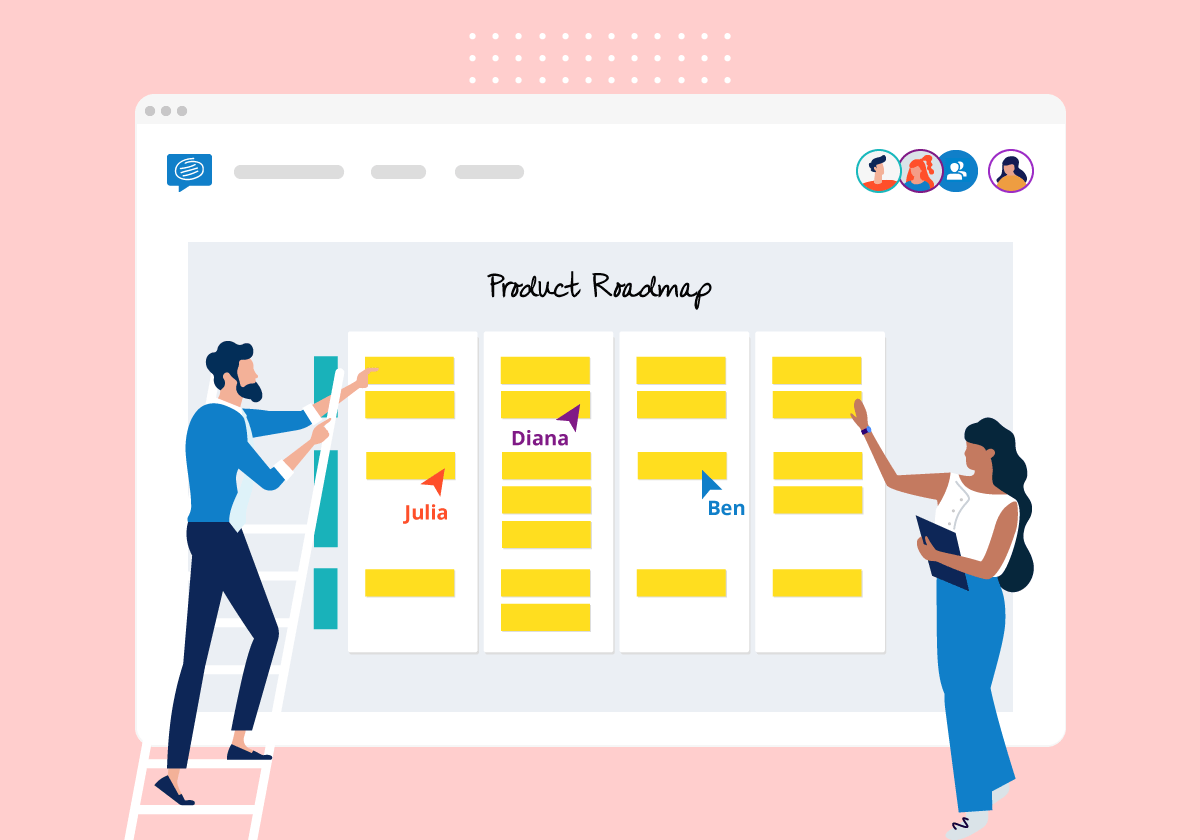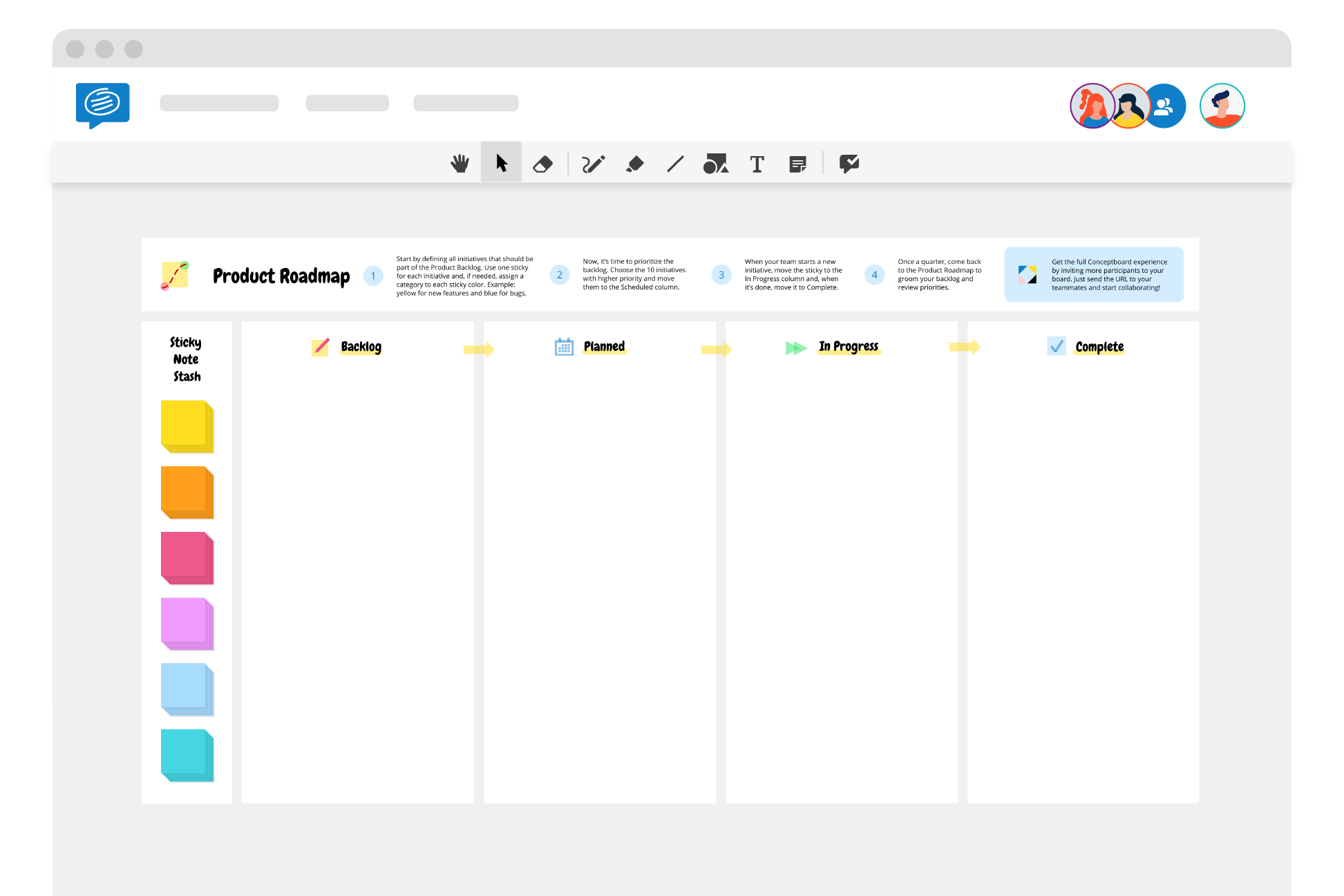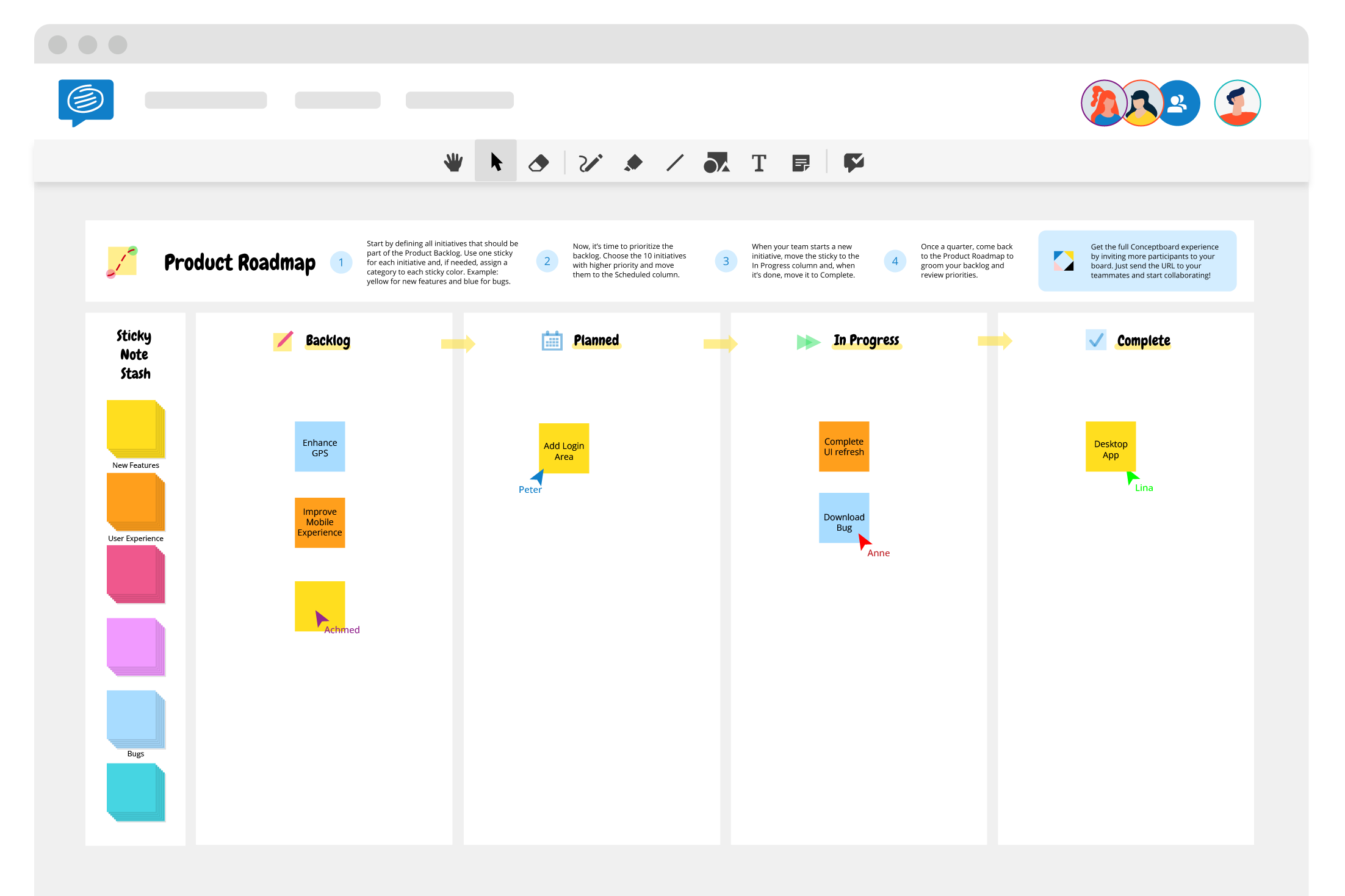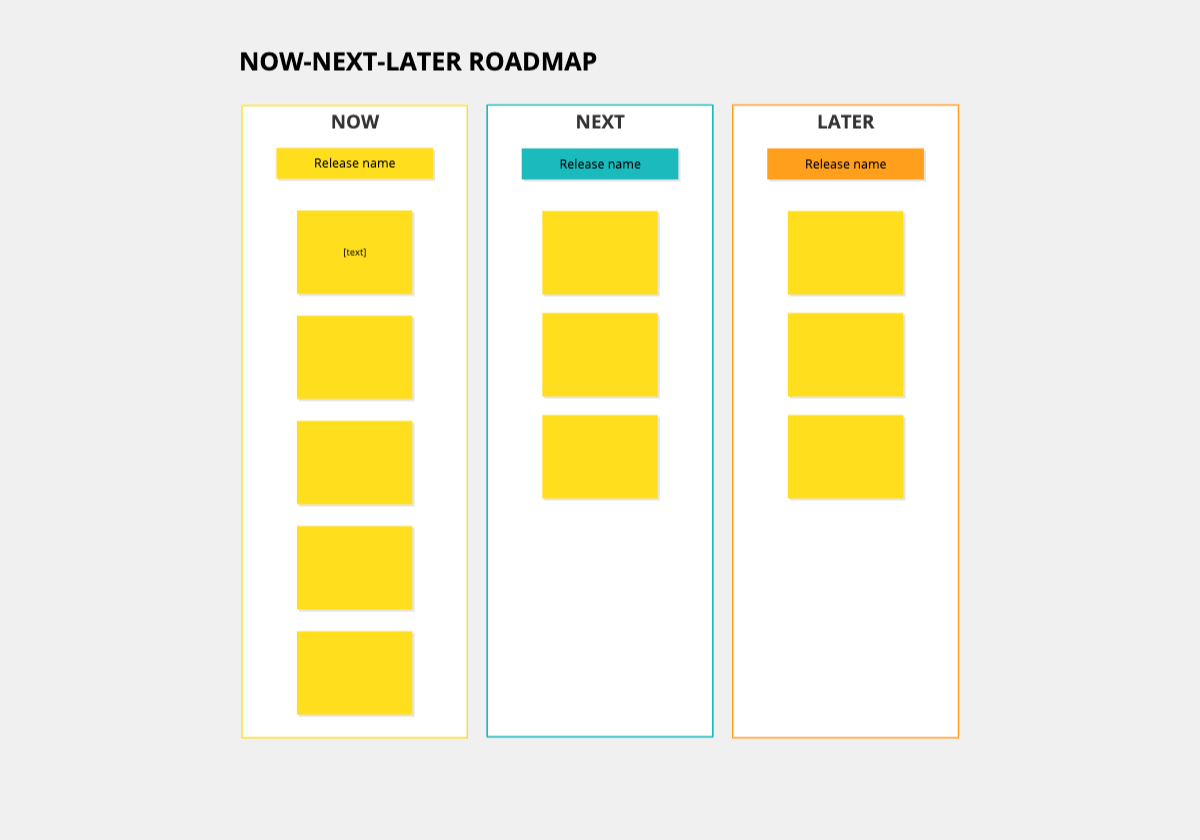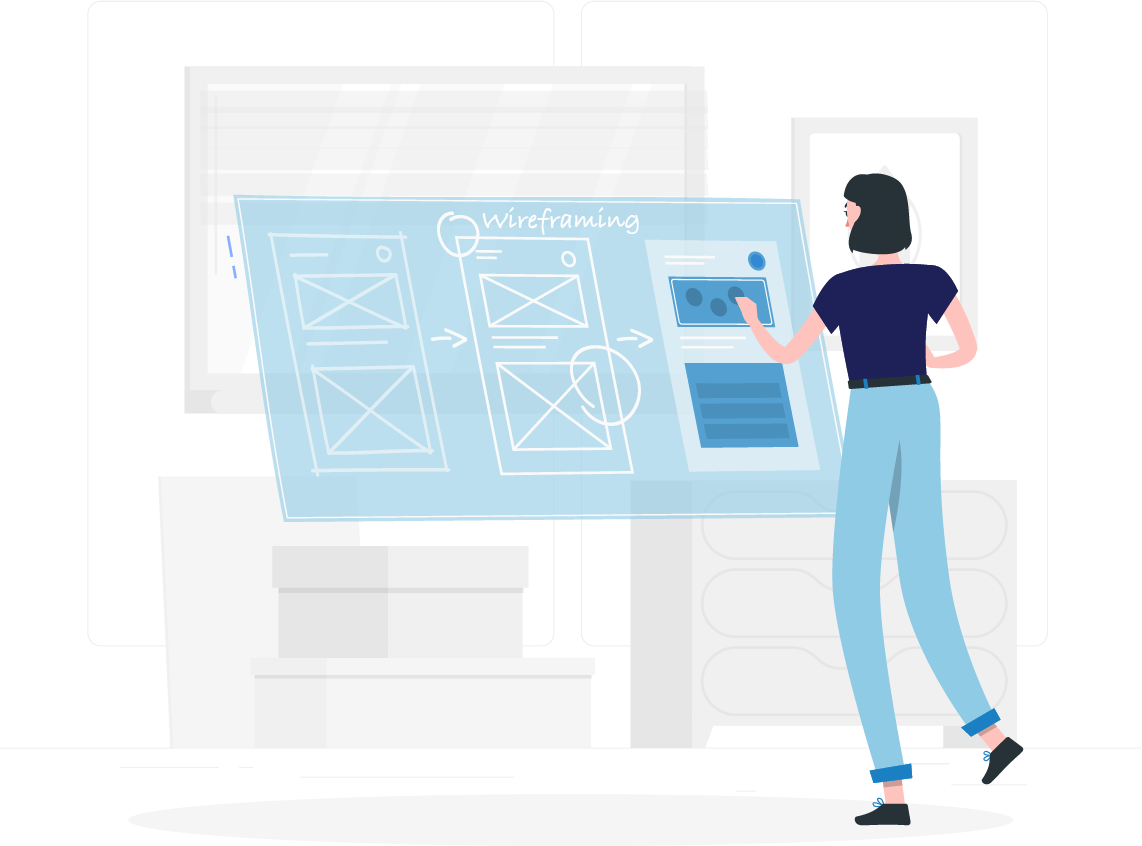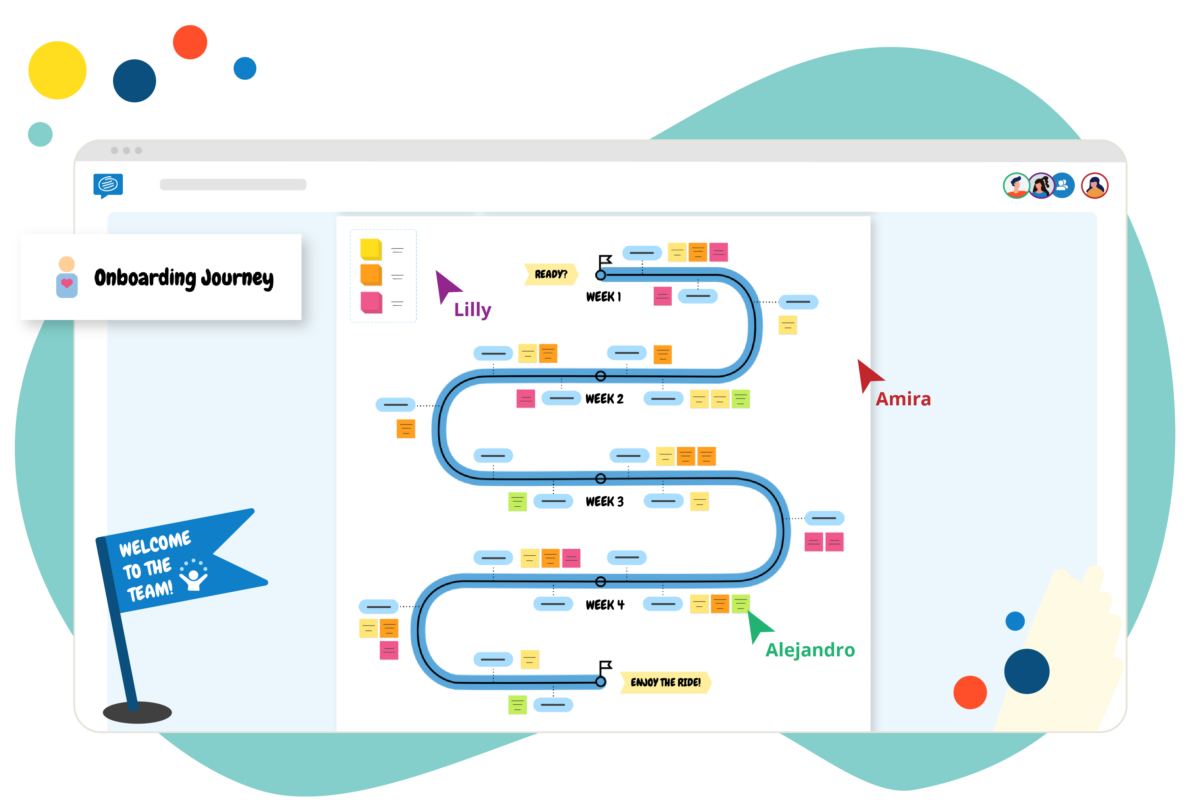What is an agile product roadmap?
The product roadmap provides a high-level strategic overview of how the product is expected to grow over course of several releases. The primary objective of the product roadmap is to align stakeholders and describe how the product vision will be achieved. Unlike a product backlog, it is counter productive or even anti-agile to clog up a product roadmap with too many features. An effective product roadmap is clear, visual and easily understandable. It should answer 3 key questions:
- What is being done?
- How will it be achieved?
- How does this connect with the product vision?
Our collaborative product roadmap templates are easy to create, edit and share. Each template has been designed to provide a visual overview of the project and can be exported as a PDF.
Creating an agile product roadmap
Product owners are often faced with the challenge of communicating the product roadmap to different stakeholders. It is for this reason that we have created three easy to use roadmap templates each of which showcase the roadmap at different levels of granularity. Each of these can also be used at different points in time in the product development process.
Goal oriented roadmap
The goal oriented product roadmap template is all about simplicity and shifts the emphasis from the features to be developed to the end-goal of the product. If you are looking for a product roadmap that focuses on the end-goal as well as the value provided by each major release then this is a great template in your toolkit. This template can also be shared with stakeholders at an executive level for a great project overview.
How to use the template:
- Timeframe- Since this provides an overview, a loose timeframe such as H1 or Q3 2021, can suffice.
- Versions- A naming convention for the different versions of major releases should be decided upon in advance.
- Goals- This is an important row and should encapsulate the business goals or benefits each release intends to achieve. An example could be “improve user retention” or “increase time spent”.
- Features- Enumerates the features necessary to achieve the stated goals for major releases. These should be restricted to between 3 and 5 for maximum effectiveness.
- Metrics- These are the tangible results that measure if each goal has been achieved. For example, 20% increase in average time spent on page.
Category based product roadmap
This is perhaps the most bread-and-butter of all the roadmap templates. But don’t let its simplicity fool you. This template is extremely flexible and is great at providing a strategic overview by categorizing tasks by progress. This template also uses ‘swim lanes’ to cluster tasks. For example new features can be placed in one swim lane and integrations in another.
How to use the template:
- Identify overarching categories each task can be bucketed into. Each horizontal ‘swim lane’ is dedicated to one category.
- Tasks are written on digital sticky-notes and placed in each of the vertical columns depending on progress made.
- These sticky-notes can be moved along the various columns as the project progresses over time.
- Tasks should be revisited over regular intervals and updated.
Now-next-later roadmap
This useful roadmap template provides a great visual overview of the project. It is also easily understandable by stakeholders irrespective of their level of involvement. Work is classified into what is currently being done at present, what will be done next and the long term. Unlike the earlier templates, the now-next-later template focuses on features than on the end goal. Features are also classified according to releases providing easy visualization.
How to use the template:
- Add releases at the top of every column to easily categorize features by release
- Write down the most important features for the release in each column on sticky notes
- As you move horizontally across the columns from left to right, the features should be more high-level
- Update upon completion of each release
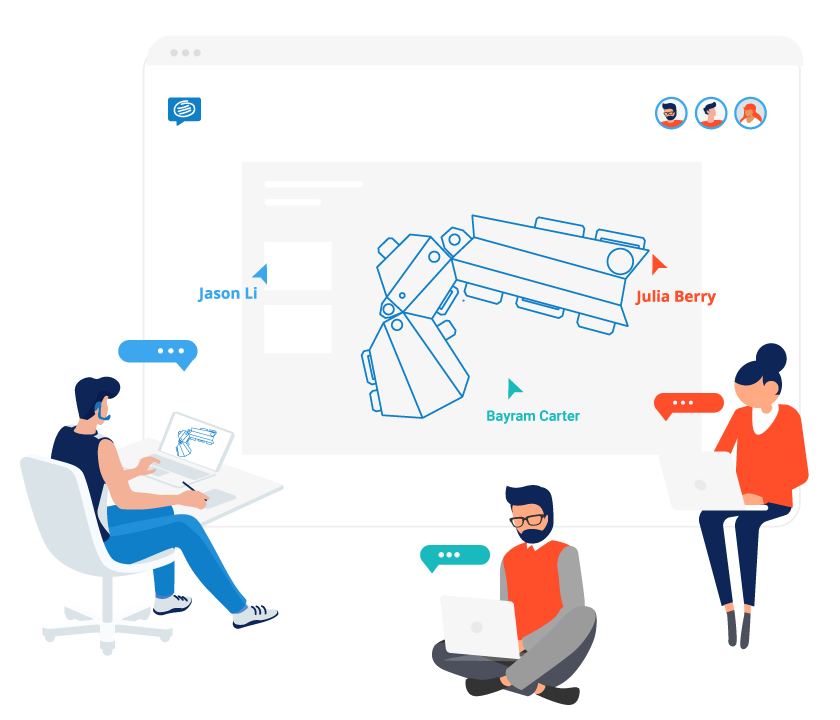
The online whiteboard built for agile teams
Agile roadmap example
We’ve created an example of what an agile product roadmap template for a software development project should look like. The advantages of a collaborative template is that you can work on it simultaneously along with the team.
Get a free conceptboard account today to create visual boards like these.
With Conceptboard’s online whiteboard, it is easy to collaboratively create visual scrum artifacts such as Sprint Planning templates, and kanban boards. For more resources on how to seamlessly transition your agile team to remote and more, read our blog.

